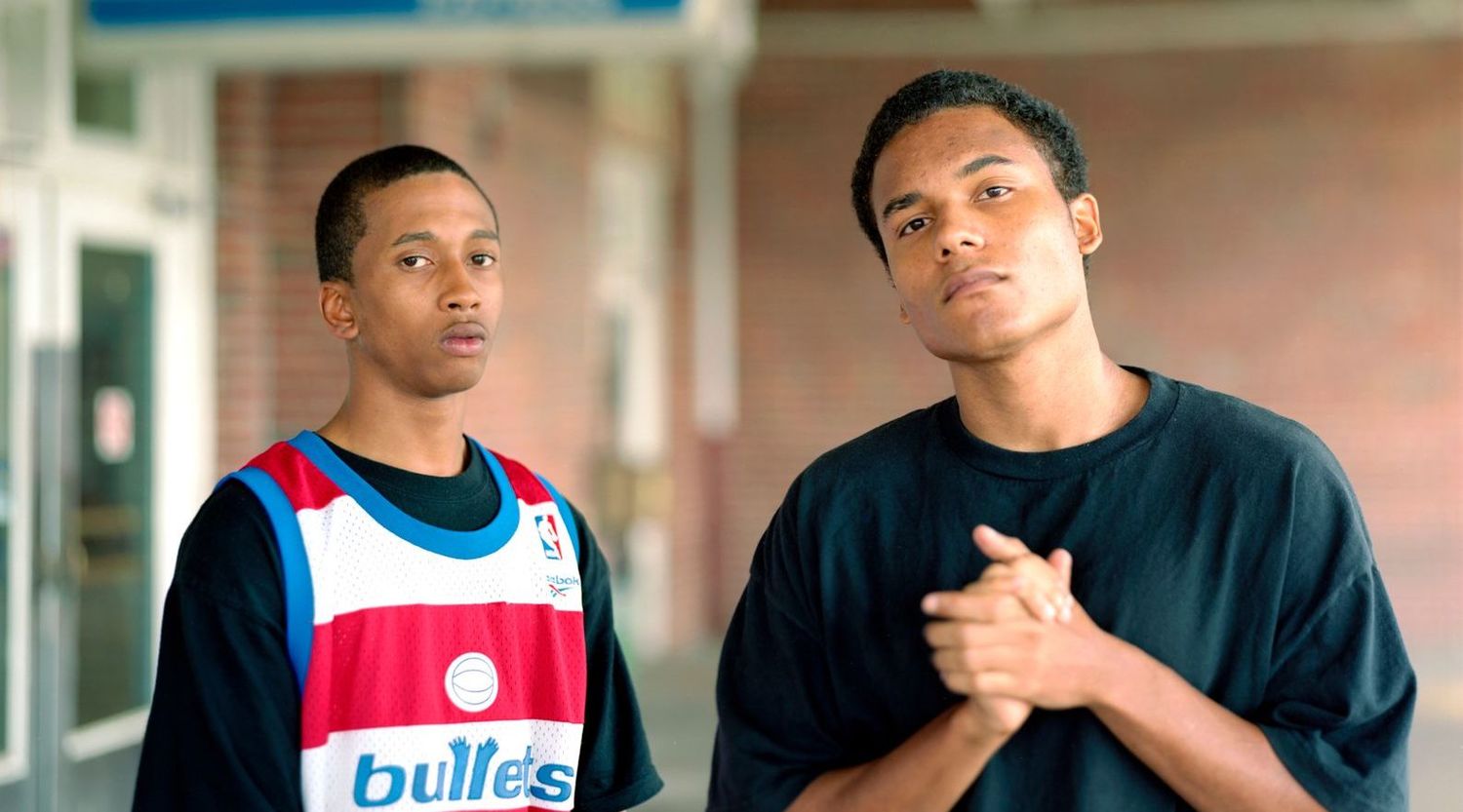Since the invention of photography, portraiture remains one of the most personal and captivating genres that the medium has to offer. One of the first things early inventors felt compelled to do was turn the lens on other people, capturing their forms and gazes forever as a fixed moment in time. Today, our interest in people as subject matter is just as strong—their gestures, clothing and expressions allude to a full and rich story that feels just beyond our reach, caught somewhere in their frozen gazes.
But while portraiture feels like the most present and accessible form of photography, its conception and execution is actually much more difficult than we assume. Photographer Richard Renaldi, whose expansive career is grounded in the exploration of portraiture, also teaches students how to take photos of other people—often strangers. While young photographers usually want a clear answer—a magic method for how to best connect with their subjects—Renaldi asserts that there isn’t a cut-and-dried solution. You just have to find a way to remain relaxed, and keep trying over and over again.
We reached out to Renaldi to speak about what he’s learned about the genre of photo portraits across his decades-long career. In this interview, he speaks about discovering large format photography, what inspires his numerous portrait series, and why portraiture remains such a pervasive force in our photographic world.

LensCulture: I want to speak a bit about how you started working with portrait photography. I think there’s a lot of misconception that surrounds the genre—people write it off as an easier method to tackle, and I completely disagree. Portraiture is so historical and it’s always all around us, so dabbling and focusing on that genre actually takes a lot of guts. What first drew you to it?
Richard Renaldi: It’s interesting you say that, because I hear it a lot. And it is quite to the contrary, as you said. When I teach photography, people have a lot of anxiety about photographing strangers. I think portraiture is a lot more complicated than we give it credit for—especially street portraiture. I’ve always been attracted to the genre because I like people—I like to look at them, observe them—and the camera is an extension of the eye that legitimizes that stare.
I worked as a photo researcher at Magnum in the ’90s, so I saw a lot of photos in a reportage style, and I think that inherently gave me the desire to slow things down and engage with my subjects. When I started using an 8x10 view camera, that really allowed me to reinvent my process and start from scratch. I could really dig into what it meant to make a portrait of a stranger on the street.

LC: Why is the relationship between photographer and subject in portrait photography so important? How do you personally approach that dynamic?
RR: It depends on what I’m looking for in each project. When I was casting for Touching Strangers, I was thinking about cataloguing different types of Americans. But when I was shooting Manhattan Sunday, I was thinking about approaching people who were putting on that drag of glamor, so to speak. They were presenting this sort of ideal self to the world for night life, so I was looking for a specific type of person.

RR: Definitely. I wanted to engage with ideas about groups on the street, and touch on that unseen adhesive tissue linking us all together. I wanted to physically merge people into one frame. When I was thinking about how to do it, I was shooting people on communal benches at Greyhound bus stations for the project See America by Bus. I started encountering that same scenario, where I wanted to photograph two or more people—strangers—in the same frame. The extra challenge of coordinating this interaction really appealed to me.

RR: I love working with a view camera because it slows things down. It’s cumbersome, and becomes a conversation piece in and of itself. People are a little mystified by it, and their curiosity in it becomes an icebreaker. It’s a formal portrait experience, but the whole process of it is a little more casual. People can just relax because of the time involved, and they have some time to shake out their giggles and be more present.
LC: What other methods do you use, and how do you decide what method best suits an idea?
RR: It’s always about what makes the most sense. When I’m shooting on airplanes or at airports, that’s going to be hand-held, for sure. If I’m shooting something with a landscape, I throw the view camera in the back of the car. I’ve been doing a hotel room portrait series with a DSLR. I don’t want to take my view camera with my every time I travel, so what makes sense when I’m mobile is either a medium or 35mm format. That ease of movement is my impetus.

RR: Good question. I look for authenticity, engagement, a tender and compassionate point of view, sensuality. I think a sense of presence, where you feel like the subject is not only looking at the photographer, but looking at you. Some sort of deep looking—a presence rather than self-consciousness. Sometimes it’s about quality of light, or mood. If a portrait has a narrative, I’m usually drawn to it. I don’t necessarily mind if something is staged, but when things start to feel too artificial, I think it’s a crutch.
LC: As a teacher of photography, are there certain things you find yourself telling people over and over again when it comes to approaching the medium? What’s a lesson you find yourself returning to with each student?
RR: A lot of people think that there’s some sort of magic formula, and no such formula exists. People just want you to tell them what to do, but you’ve got to go out there and do it yourself. The only way you’re going to get comfortable is if you do it on your own. People want to know how to approach strangers. They want to know what to say, how to do it, and what you need to do to make them relax. For a lot of young photographers, it’s really anxiety-inducing to approach somebody. Try not to be thwarted by that experience. It only gets easier with practice, and thinking about what you can do to relax yourself first. That’s a big one.

LC: You’ve got a substantial Instagram following, which allows you to share your dynamic work to a wide audience. How do you see Instagram playing a role in the career of photographers today. Is it necessary?
RR: I’d like us all to move away from it, to be honest. I don’t think it’s necessary. Social media is a double-edged sword. I’ve definitely gained things from it, but screen time is changing us, and its effects are profound. I don’t even think we’re fully aware of what’s going on. I have a growing concern about it. I think it’s changed the industry and made photography too accessible, so that it’s harder to make a career out of it. But I also think it’s made great photography that much more obvious. It’s brought more people into the medium, so that’s amazing. But based on what we’ve learned in the last couple of years, especially regarding the nefarious uses of the Facebook corporation, I think there are legitimate concerns. Instagram fame, as they say, is not terribly deep.
“Why are portraits so fascinating to so many people? We’re interested in what we do, where we are, how we feel, how we dress. We’re interested in the surface of ourselves, and we’re also interested in the interior life of ourselves. There’s interest in human psychology. All of these things are within the human shell, and our shell is very dominant when we’re alive, sitting in front of a camera.”
LC: And what do you want people to take away from your work, no matter what platform they encounter it on, whether Instagram or an exhibition—or in one of your books?
RR: I want to leave that up to the audience. I just hope I somehow move them to feel something. Art is very interpretive, and it should remain that way. Of course if you create something with a certain intent, and people come away with something completely different, you might have to rethink what you’re doing. But Touching Strangers was so broadly interpreted, and people projected their own ideas onto the pictures—their ideals and fantasies about what was happening in that work. I’m not overly conceptual. I like to work on themes and projects where I think there are stories I’m telling and feelings I’m exploring, and I like to leave those interpretations more open.

LC: Why do you think portraiture continues to be such a pervasive genre in photography? It’s been there since the very beginning—it’s one of the first things we did with the medium, and it’s probably one of the last things we will do with it.
RR: Exactly. It’s because of humanity and our interest in ourselves—our interest in the human figure. We’re interested in what we do, where we are, how we feel, how we dress. We’re interested in the surface of ourselves, and we’re also interested in the interior life of ourselves. There’s interest in human psychology. All of these things are within the human shell, and our shell is very dominant when we’re alive, sitting in front of a camera.



